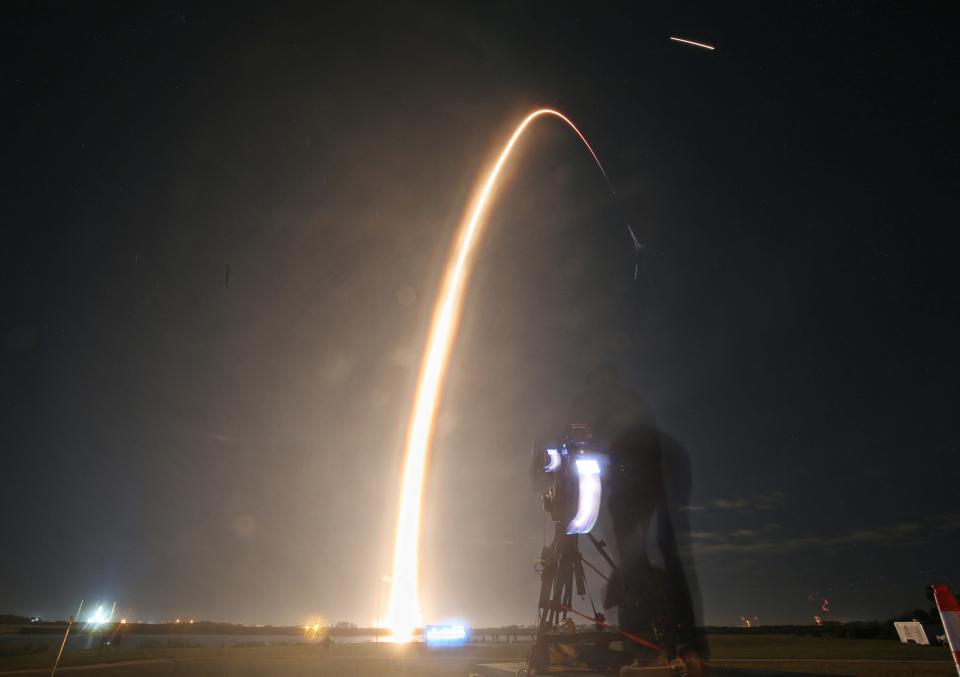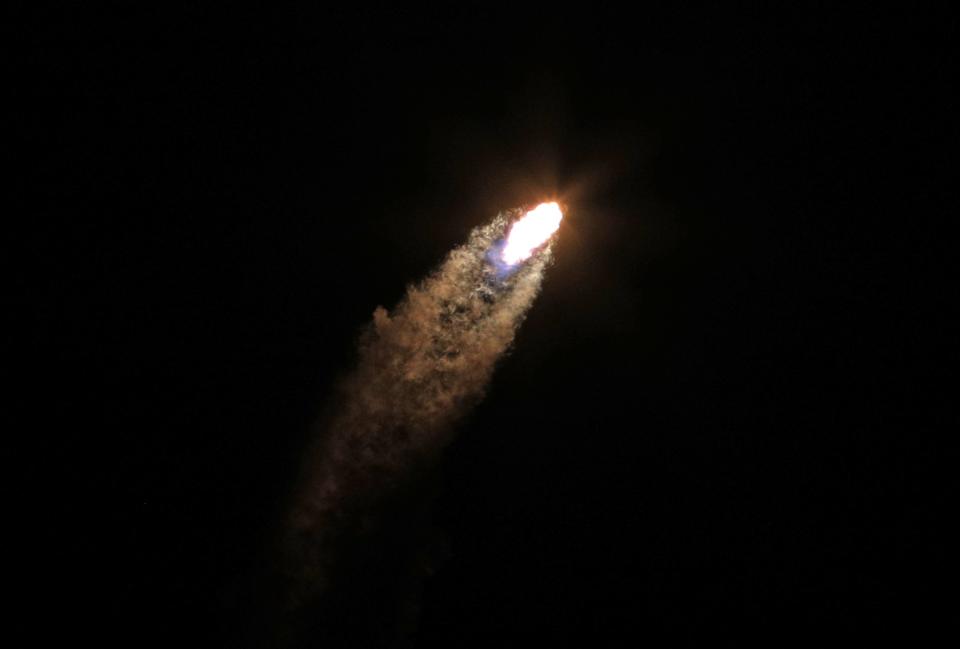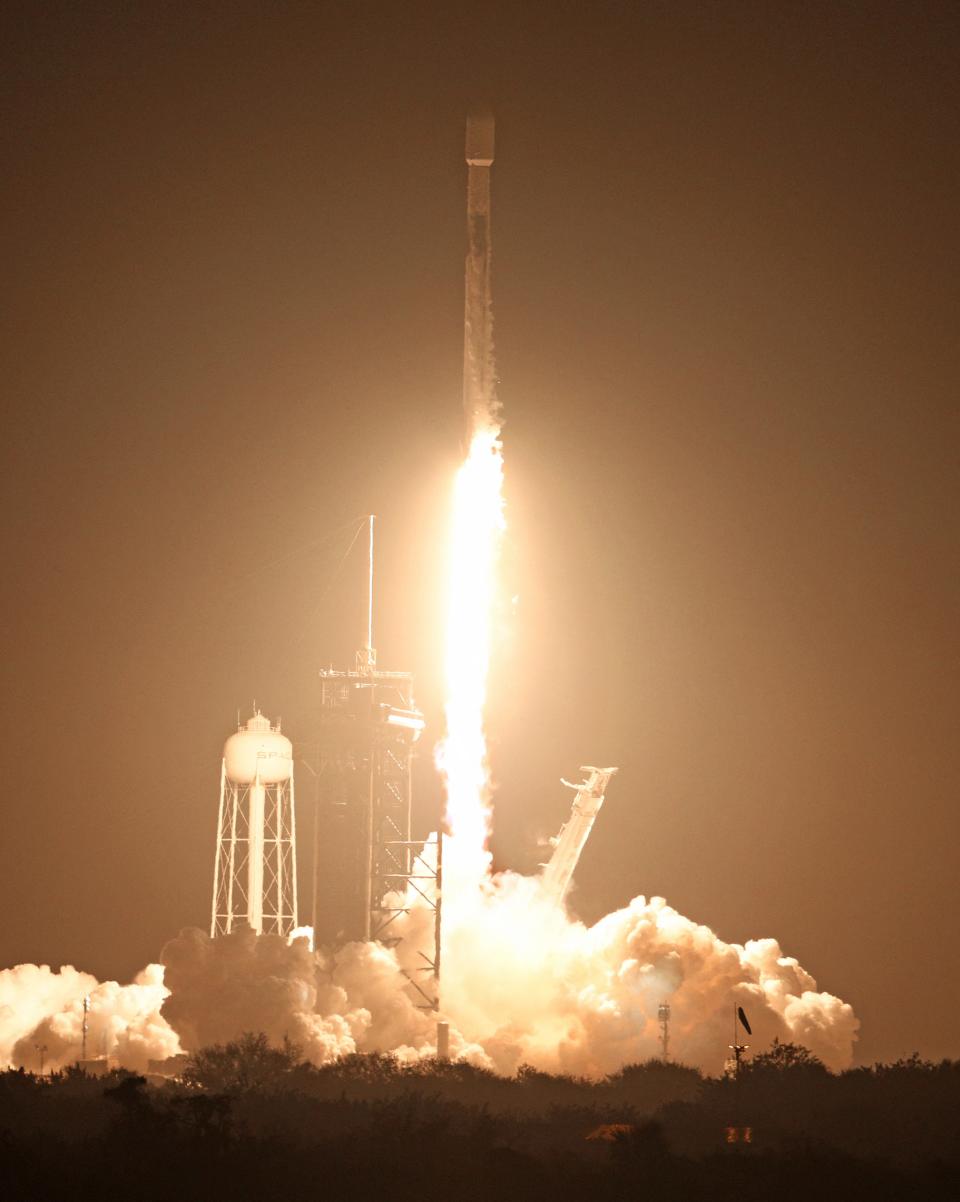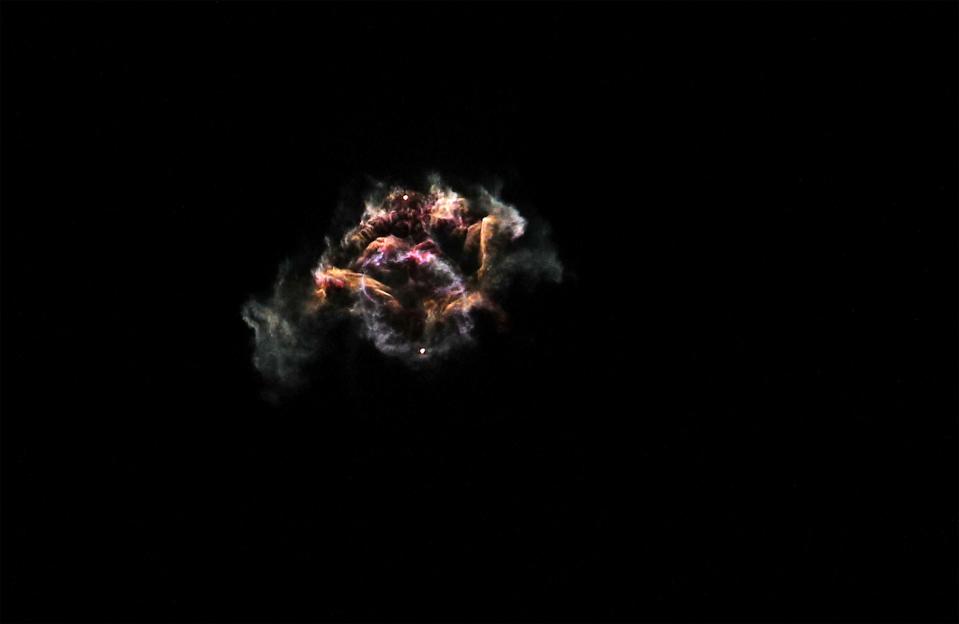'Odysseus' lander sets course for 1st commercial moon landing following SpaceX launch
The privately-built "Odysseus" lander is officially on its way to the moon with the goal of becoming the first commercial U.S. vehicle to ever make it to the lunar surface.
The probe hitched a ride to orbit aboard the SpaceX Falcon 9 rocket, which launched at 1:05 a.m. EST Thursday from NASA’s Kennedy Space Center in Cape Canaveral, Florida. The launch, which had been delayed from Wednesday due to an error with the rocket's methane fuel, comes a little over a month after another American company's lander tried – and failed – to reach the moon.
If it makes it to the lunar surface, Houston-based Intuitive Machines' spacecraft would also hail the first American moon landing in more than 50 years.

Martian eclipse: Rover captures Red Planet's moon whizzing by sun's outline
What to know about the 'Odysseus' mission
Intuitive Machines built the Odysseus spacecraft to carry cargo for NASA and other customers to the lunar surface for its IM-1 mission.
Less than an hour after the Falcon 9 launch, Intuitive Machines reported that its lander had separated from the rocket’s second stage and its systems were operating as planned.
Named for the Greek hero of Homer's epic poem "The Odyssey," the spacecraft is expected in the days ahead to touch down near the moon's south polar region. While previous American moon missions have landed in the equatorial regions, the south pole holds scientific interest due to the presence of water ice thought to be abundant within its craters.
The spacecraft, the design of which the company calls a Nova-C, is a 14-foot-tall hexagonal cylinder with six legs. Intuitive Machines will operate the mission from its Nova Control Center in Houston, where flight controllers will monitor the spacecraft's health, send commands and receive data.

The journey to the moon is expected to take about a week before Odysseus attempts on Feb. 22 to settle onto the lunar surface. If all goes to plan, it will become the first American spacecraft to touch down on the moon’s surface since the final Apollo mission in 1972.
"We carry with us the collective spirit of perseverance, fueled by the dedication and hard work of everyone on our team,” Intuitive Machines President and CEO Steve Altemus said in a statement ahead of the launch. “Their tireless efforts have brought us to this moment, where we stand on the precipice of history, humbled by the gravity of our mission, yet emboldened by the boundless possibilities that lie ahead."
Moon mission comes weeks after failed Peregrine landing

A successful mission would also make Intuitive Machines the first private company to ever land an unmanned spacecraft on the moon after previous efforts have failed.
In the United States, the Peregrine lander's doomed mission to the moon ended with the spacecraft burning up in Earth's atmosphere days after its Jan. 8 launch.
Shortly after the spacecraft designed and operated by Pittsburgh aerospace company Astrobotic separated from the United Launch Alliance's Vulcan rocket, its propulsion began leaking a critical amount of propellant. Astrobotic attempted to salvage the mission by having its probe explore what it could of space, but the malfunction eventually forced the company to abandon its plan.
The lander may not have been able to touch down on the moon, but NASA still said scientists were able to gather important data on the "interplanetary environment" before it was sent on Jan. 18 plummeting to Earth, burning up in the atmosphere.
The Peregrine lander's mission also drew highly-publicized scrutiny from the Navajo Nation, whose members objected to the human remains it carried on board bound for a lunar burial.
NASA's interest in lunar missions

If a private company like Intuitive Machines can pull off the mission, it would open the door for NASA to work with more commercial entities on future space endeavors.
Both Odysseus and Peregrine are part of NASA’s Commercial Lunar Payload Services program, or CLPS. With a budget of $2.6 billion in contracts available through 2028, the program will see NASA more often partnering with private companies to help place scientific payloads on the lunar surface.
As the primary customer for the Odysseus mission, NASA paid Intuitive Machines $118 million to take its scientific payloads to the moon as it prepares to send astronauts back to the lunar surface for its since-delayed Artemis program. Among the cargo are tools to test plume-surface interactions and measure both radio astronomy and space weather interactions with the lunar surface.
Intuitive Machines also is serving customers like Columbia Sportswear, which is testing a metallic jacket fabric as a thermal insulator on the lander, as well as sculptor Jeff Koons, who is sending up 125 inch-sized moon figurines in a see-through cube, according to reporting from the Associated Press.
The mission, and others like it ahead, is intended to pave the way for human exploration of the moon.
NASA delayed plans for Artemis II until 2025, which is when a group of spacefarers could finally embark on a 10-day trip circumnavigating the moon. The mission would be the precursor to Artemis III years later, when another crew of astronauts will set out to land on the lunar surface itself.
Contributing: The Associated Press
Eric Lagatta covers breaking and trending news for USA TODAY. Reach him at elagatta@gannett.com
This article originally appeared on USA TODAY: 'Odysseus' SpaceX launch: Could it be 1st commercial lander to reach moon?

